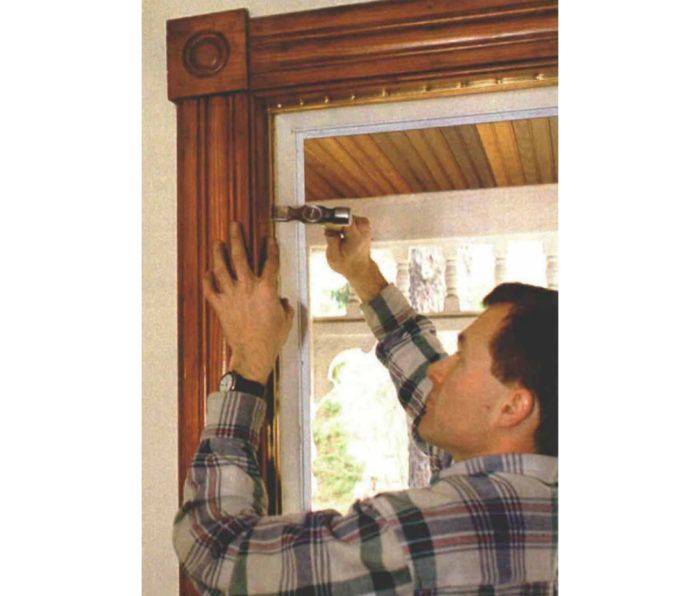Interlocking Weatherstripping for Doors
Arguably the best protection against wind and rain penetration, two-piece bronze can be finicky to install.

Synopsis: This article shows how interlocking weatherstripping should be applied to exterior doors, a process that can be used on old or new doors and windows. The bronze weatherstripping the author recommends isn’t the cheapest alternative, but it produces a long-lasting, weathertight seal.
It’s amazing that homeowners can put up with a door that needs a shove to get the dead bolt to operate in the summer. But when the first cold breezes of fall whistle into the house, fixing that door becomes a priority. That’s when they call me.
Interlocking Weatherstripping isn’t the cheapest alternative. Properly installed, however, it can be the most effective. This weatherstripping can be installed on any new or old door or window. In this article, I’ll explain how I added interlocking weatherstripping to an existing in-swing door.
Fit the door in the jamb
I prepare the door and opening by taking off old weatherstripping and scraping old paint off the jambs. I make sure the door is not hinge-bound and that the hinges are fastened with long screws through the jamb and into the framing. I need at least ½ in. of space between the hinge and the doorstop to make room for the slot and its mating weatherstrip bead. If necessary, I reset the hinges to get the space.
Next, I go to work on the door, planing the edges wherever they bind until I have a clean, even gap between the door and the jamb on the top and sides. A gap of just under 1/8 in. is usually enough, but the size of the gap is also determined by the season and the weather conditions. For example, if I’m working during the dry winter months, I make the gap slightly larger, say 5/32 in. Once the gap is even all around the door, I tune the doorstops with a rabbet plane to get an even fit between the face of the door and the stop.
Then I check the strikes. If they are set properly, the door should open and close precisely with the strike catching just as the door meets the jamb, but not so tight that the door must be slammed. After the interlocking weatherstripping has been installed correctly, the door should operate just as smoothly.
Don’t take off the door yet
The interlocking weatherstripping I use is made by Accurate Metal Weatherstrip Company. It is available either as concealed or as surface mount, and it is manufactured in bronze, zinc-coated steel and stainless steel. I prefer the concealed variety because it is less obtrusive and holds up better, and I recommend bronze because of its longevity and rich patina.
Before removing the door to install the weatherstripping, I run a pencil along the doorstop to mark the top and latch sides of the door from the outside. I also scribe a line across the lower rail of the door for the thickness of the saddle plus 1/8 in. for clearance.
For more photos, illustrations, and details, click the View PDF button below:
Fine Homebuilding Recommended Products
Fine Homebuilding receives a commission for items purchased through links on this site, including Amazon Associates and other affiliate advertising programs.

Smart String Line

100-ft. Tape Measure

Original Speed Square


























